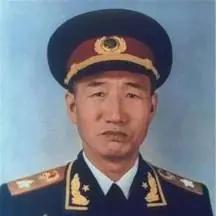
Xu Xiangqian
| Name | Xu Xiangqian |
| Title | Chinese politician and field marshal (1901-1990) |
| Gender | Male |
| Birthday | 1901-11-08 |
| nationality | Qing dynasty |
| Source | https://www.wikidata.org/wiki/Q702194 |
| pptrace | View Family Tree |
| LastUpdate | 2025-10-01T10:19:08.188Z |
Introduction
Xu Xiangqian (November 8, 1901 – September 21, 1990), was born in Yong'an Village, Wutai County, Shanxi (originally called Bojia Village). His ancestral home is in Wutai County, Shanxi Province, China. His father was Xu Maohui, a late Qing Dynasty xiucai (literary graduate), and his mother was Zhao Jinluan, a homemaker. His family environment influenced his early personality development; his mother was devout, kind-hearted, diligent, and honest, which had an important impact on shaping Xu Xiangqian's character. In his childhood, Xu Xiangqian received family education under his mother's guidance, grew up working alongside her, and gradually developed qualities of thriftiness and kindness.
In 1914, young Xu Xiangqian entered the Tangyang Higher Elementary School in Dongye Town. Due to poverty, he had to drop out and return to his hometown. During his youth, he worked as an apprentice in Fuping, Hebei, enduring hardships while reading many classical novels, which ignited his patriotic ambitions. In March 1919, he was admitted to the first short-term class of Shanxi National Normal School for systematic education. After graduation, he worked as a primary school teacher in Yangqu County and Heben Village, Wutai County, but was dismissed for promoting patriotism and anti-feudal ideas. In the autumn of 1921, he entered the Whampoa Military Academy, receiving formal military training, becoming a graduate of the first class, and was later appointed squad leader at the school.
After graduating from Whampoa in April 1924, he stayed on as a squad leader. In the spring of the same year, he participated in the first eastern expedition against warlord Chen Jiongming. In November 1926, he went to Wuhan to serve as an instructor in the Nanhu Cadre Corps. In March 1927, he joined the Communist Party of China. In April of that year, he became the captain of the Wuhan Central Military and Political School and led student troops in attacking the mutinying troops of Xia Douyin. After 1927, he served successively as leader of workers' Red Guard units, chief of staff and later commander of the Fourth Red Army. In June 1929, he was sent to northeast Hubei as Deputy Commander of the Chinese Workers' and Peasants' Red Army’s 31st Division.
In the spring of 1930, he became vice-commander of the First Army of the Chinese Workers’ and Peasants’ Red Army and commander of the First Division. Early 1931, the First Army merged with the Fifteenth Army to form the Fourth Army of the Chinese Workers’ and Peasants’ Red Army, where he served as Chief of Staff and later as Army Commander. In November 1931, he was elected as a member of the Central Revolutionary Military Committee of the Chinese Soviet Republic and served as commander of the Fourth Front Army. During the campaign against the Kuomintang’s “Encirclement and Suppression,” he played a vital role, repeatedly commanding battles that repelled enemy assaults.
In 1932, due to the disparity in strength and strategic misjudgments, the main Red Army forces had to withdraw from the Hunan-Hubei-Anhui Soviet Area and establish a new revolutionary base in Sichuan and Shaanxi. During this period, he directed several battles, including the resistance against the “Six Routes Offensive” in the Sichuan-Shaanxi Soviet Area and multiple anti-encirclement campaigns. During the Long March, the Fourth Front Army achieved a significant victory in gaining strategic coordination in 1936 at Huining, Gansu, ending the march and opening a new strategic phase.
After the outbreak of the Second Sino-Japanese War, Xu Xiangqian served as deputy commander of the 129th Division of the Eighth Route Army, leading troops in establishing anti-Japanese bases in southern Hebei and conducting guerrilla warfare. In 1942, he was appointed deputy commander (and briefly acting commander) of the Shaan-Gan-Ning-Jin-Sui Anti-Japanese United Army. In 1945, he became deputy commander of the Shanxi-Hebei-Luting-Anhui Military District, and deputy commander of the North China Military Region, as well as commander of the First Corps. In 1946, he married Huang Jie.
During the Chinese Civil War, he served as deputy commander of the Shanxi-Hebei-Luting-Anhui Military District and the North China Military Region, commanding numerous campaigns and earning important victories. In April 1949, he led forces to capture Taiyuan, bringing an end to the Shanxi Yan Xishan regime and ensuring control of the entire region. After the founding of the People's Republic of China, he held major military and governmental positions, including Chief of the General Staff of the Chinese People's Liberation Army, Vice Chairman of the Central Military Commission, and Minister of National Defense. In 1955, he was awarded the rank of Marshal of the People's Republic of China.
Throughout his political career, Xu Xiangqian was a key leader of the Chinese Communist Party, serving as Vice Chairman of the Standing Committee of the National People's Congress, among other roles. He had broad cultural interests, excelling in photography, calligraphy, and Chinese opera. His family includes children who have achieved success in military and scientific fields. He passed away on September 21, 1990, at the age of 88.
Family Tree
Tap to expand more relatives
